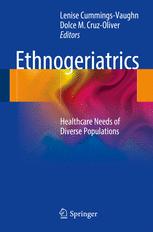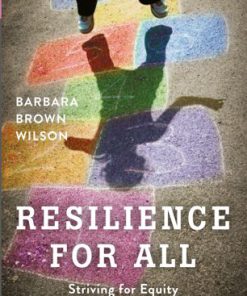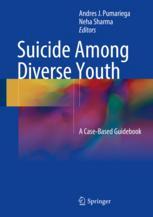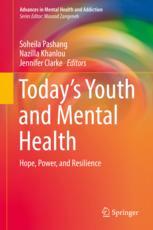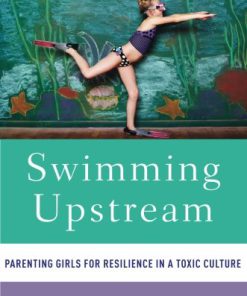Resilience Interventions for Youth in Diverse Populations 1st Edition by Sandra Prince Embury, Donald H Saklofske ISBN 1493905422 9781493905423
$50.00 Original price was: $50.00.$25.00Current price is: $25.00.
Resilience Interventions for Youth in Diverse Populations 1st Edition by Sandra Prince Embury, Donald H Saklofske – Ebook PDF Instant Download/Delivery: 1493905422, 9781493905423
Full download Resilience Interventions for Youth in Diverse Populations 1st Edition after payment
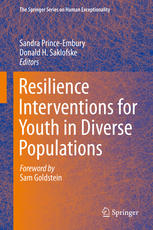
Product details:
ISBN 10: 1493905422
ISBN 13: 9781493905423
Author: Sandra Prince Embury, Donald H Saklofske
Our uncertain times are hard enough for adults to navigate. For all too many young people—even many who appear to possess good coping skills—the challenges may seem overwhelming. More and more, resilience stands as an integral component in prevention programs geared to children and adolescents, whether at risk or not. Resilience Interventions for Youth in Diverse Populations details successful programs used with children and teens in a wide range of circumstances and conditions, both clinical and non-clinical. New strength-based models clarify the core aspects of resilience and translate them into positive social, health, educational, and emotional outcomes. Program descriptions and case examples cover diverse groups from homeless preschoolers to transgender youth to children with autism spectrum disorders, while interventions are carried out in settings as varied as the classroom and the clinic, the parent group and the playground. This unique collection of studies moves the field toward more consistent and developmentally appropriate application of the science of resilience building. Among the empirically supported programs featured: Promoting resilience in the foster care system. Developing social competence through a resilience model. Building resilience in young children the Sesame Street way. School-based intervention for resilience in ADHD. Girls Leading Outward: promoting resilience in at-risk middle school girls. Resiliency in youth who have been exposed to violence. Resilience Interventions for Youth in Diverse Populations is an essential resource for researchers, professionals/practitioners, and graduate students in clinical child and school psychology, social work, educational psychology, child and adolescent psychiatry, developmental psychology, and pediatrics.
Resilience Interventions for Youth in Diverse Populations 1st Table of contents:
Part I: Introduction and General Issues
Chapter 1: Building a Science of Resilience Intervention for Youth
Resilience and Its Enhancement
Introduction and General Issues
Interventions for Schools and Other Nonclinical Populations
Interventions for Clinical Populations
Summary
References
Chapter 2: Review of Resilience Conceptual and Assessment Issues
Resilience Enhancement
Consideration of Interventions
Assessment Challenge
References
Chapter 3: Three-Factor Model of Personal Resiliency and Related Interventions
Section I: Three-Factor Model of Personal Resiliency and Related Interventions
Broad-Based Resilience Issues
Three-Factor Theory of Personal Resiliency
Sense of Mastery
Sense of Mastery Enhancing Tools
Sense of Mastery Enhancement for Young Children
Mining for Mastery and Strength Identification
Self-Praise and Self-Acknowledgment
Identifying Strength Distracters for Children Adolescents
Sense of Relatedness
Interventions Targeting Sense of Relationship
Perceived Social Support
Developing Possible “What If” Support Networks
Exploring Trust
Enhancing Social Skills and Enhancing Empathy
Emotional Reactivity
Interventions to Reduce Emotional Reactivity
Sensitivity
Recovery
Impairment
Summary of Interventions and the Three-Factor Model
Section II: Resiliency Scales for Children and Adolescents and Construct Validity
Description of the Resiliency Scales for Children and Adolescents
Summary Index Scores
Psychometric Adequacy of the RSCA
Reliability
Research and Validity Evidence
Construct Validity
Concurrent Validity by Factor of Personal Resiliency
Protective Factors: Self-Concept
Emotional Intelligence
Protective Factor: Parent Attachment
Emotional Reactivity and Measures of Negative Affect and Behavior
Personal Resiliency, Bullying, and Victimization
Personal Resiliency and Risk Behavior
Personal Resiliency and Negative Life Events
Predictive Validity Evidence Through Criterion Group Differences
Predicting Clinical Status
Section III: Clinical Use of the RSCA and Three-Factor Model
Preventive Screening Using the RSCA Personal Resiliency Profile
Personal Resiliency Profiles: Clinical
Personal Resiliency Profiles: Normative
Linking Resiliency Intervention to Personal Resiliency Profile
Outcomes Tracking Using the RSCA
Resiliency Enhancement Measurement Guidelines
Resiliency Measurement Issues for Pre–Post-Comparison
Summary
References
Chapter 4: Creating Resilient Mindsets in Children and Adolescents: A Strength-Based Approach for C
Invulnerable Children?
Resilience Applied to All Individuals: A Belief in Intervention and Prevention
The Power of Mindsets
Punishing a Suffering Child
It Seems Like He Wants to Disrupt the Class
The Characteristics of a Resilient Mindset
To Serve as a “Charismatic Adult”
Strategies for Nurturing a Resilient Mindset
Concluding Comments
References
Part II: Interventions for Schoolsand Non-Clinical Populations
Chapter 5: Using the FRIENDS Programs to Promote Resilience in Cross-Cultural Populations
Mental Health Concerns and Their Etiology in Youth Populations
Risk Factors in Youth Populations
Protective Factors in Youth Populations
Resilience Promotion in Adolescents
The FRIENDS Programs
Studies of the FRIENDS Programs with Youth Populations
Universal Implementation of the FRIENDS Programs
Selective Studies of the FRIENDS Programs
Implementing the FRIENDS Programs in Diverse Youth Populations
Recent Innovations in Resilience Conceptualizations, Assessment, and Intervention
Future Research Directions and Summary
References
Chapter 6: Girls Leading Outward (GLO): A School-�Based Leadership Intervention to Promote Resilie
Fostering Resilience in At-Risk Minority Youth
The Importance of an Ecological Perspective of Resilience
Social–Emotional and Character Development and Service-Learning
GLO: Girls Leading Outward
Components of the GLO Program
Sample GLO Lessons
Voice
Heart
Mind
Lessons Learned: Success Stories and Problems Encountered in Implementation
Initial Research Findings on the Benefits of GLO
Future Directions and Practice Considerations
References
Chapter 7: Promoting Resilience Through Executive Function Training for Homeless and Highly Mobile P
Overview of Risk and Resilience in Homeless Children
Families and Homelessness
Homelessness and Academic Achievement
Academic Resilience in HHM Children
Executive Function and Academic Achievement
Importance of Executive Function for Academic Success
The Malleability of Executive Function
Parenting, EF, and School Success
Evolution of the Research Program
Description of the Intervention: Ready? Set. Go!
Theory of Change
Three Components of the Intervention
Teacher Training and Classroom Curriculum
Parent Training and Engagement
Individual Child Training and Support
Lessons Learned from the Iterative Strategy
Challenges
Importance of Collaboration
Ethical Considerations and Sociocultural Sensitivity
Conclusion and Future Directions
References
Chapter 8: Bringing a Resilience Perspective to Children in the Child Welfare System: A Curriculum f
Risk Factors in Child Welfare
Environmental Risk Factors
Family Risk Factors
Within-Child Risk Factors
An Emerging Focus on Resilience Promotion
The Devereux Center for Resilient Children
Your Journey Together
Method of Delivery
Module 1: Introducing Resilience
Three Core Modules of Your Journey Together
Adult Resilience
Child Resilience
Caregiving Practices
Preliminary Results from Field Testing
Preliminary Data
Qualitative Data and Implementation Challenges
Competing Priorities
Adult Engagement
Limitations and Future Directions
Conclusion
References
Chapter 9: Building Resilience in Young Children the Sesame Street Way
Theoretical and Research Bases
Resilience in Young Children
Learning as Active Engagement
Role of Emotions in Learning
Sesame Street’s Little Children, Big Challenges Initiative
Brief History of Sesame Street
Community Outreach
Role of Muppets
Role of Puppets/Muppets in Intervention Design
Sesame Street Muppets
Multimedia and Technology
Role of Multimedia Technology
Effectiveness of Technology-Based Interventions
Resilience-Based Intervention
Theory of Change
Little Children, Big Challenges Multimedia Toolkits
The Role of Research, Accountability, and Impact Evaluation
Building Resilience in Families Dealing with Divorce or Separation
Building Resilience in Families with an Incarcerated Parent
Building Resilience in Schools
Conclusion
References
Chapter 10: Enhancing Classroom Resilience with ClassMaps Consultation
ClassMaps Consultation Model
Model of Resilience
ClassMaps Survey
Consultation and Intervention Process
CMC Case Study
Background Information
Conducting a Classroom Assessment
Making Sense of Classroom Data
Planning and Implementing Classroom Changes
Evaluating and Refining Classroom Data
Implementation and Professional Development
Conclusion
References
Chapter 11: Building Resilience in Three Australian High Schools, Using the Resilience Doughnut Fram
Defining Resilience
Research on Resilience
Resilience and Mental Health
School Resilience Programs
The Resilience Doughnut Framework
The Internal Structure of the Resilience Doughnut
The External Structure of the Resilience Doughnut
Parent
Skills
Family
Education
Peers
Local Community
Money
Linking the External Factors in the Resilience Doughnut to Build Internal Resilience
The Resilience Doughnut Framework and Current Frameworks of Resilience
Practical Application of the Resilience Doughnut Framework in Three Secondary Schools
The Resilience Doughnut Intervention Basic Program
Case Studies
Case Study 1
Method
Measures
Case Study 2
Method
Measures
Case Study 3
Method
Measures
Results
Results Case Study 1
Results Case Study 2
Results Case study 3
Discussion
References
Chapter 12: Resiliency Differences Between Youth in Community-Based and Residential Treatment Progr
Resiliency and Resilience
Evolution and Definitions
Universality of the Resilience Mechanism
Opportunity to Make a Difference
Program and Participant Profiles
Type 1: Community-Based Programs
Type 2: Residential Treatment Program
Methods
Participants
Instrument
Procedure
Analysis
Results
Grouped
Separated
Score Variability and Youth Commonality between Programs
Vulnerability and Program Type
Discussion
Limitations and Future Study
Conclusion
References
Chapter 13: Resiliency in Youth Who Have Been Exposed to Violence
Statement of the Problem
Risk Factors
Resiliency Factors
Review of the Literature
Risk Factors
Exposure to Violence
Resiliency Factors
Method
Measures
Procedures
Results
Preliminary Analysis
Multivariate Analysis
Discussion
Summary
Limitations
Implications for Practice
Implications for Research
References
Chapter 14: A Multilevel Approach of Promoting Resilience and Positive School Climate in the School
Introduction
Alternative Model of School Psychological Services
Multilevel Approach of Resilience Building
Conceptual Framework
Practical Level
Towards a Transnational Multilevel Approach of Promoting Resilience and Positive School Climate
Appendix 1: Thematic Unit A: Practical Model of Resilience Promotion: Identifying Values and Goal S
Activity 1: Odysseus and His Company
Procedure
Activity 2: “Our Classroom’s Luggage”
Procedure
Activity 3: Where Is Our … Ithaca?
Procedure
Appendix 2: Thematic Unit B: Identifying, Expressing, and Dealing with Emotions
Goals
Procedure
Discussion Points
Materials Needed
Appendix 3: Thematic Unit C: Stress Management
Goals
Procedure
Discussion Points
Materials Needed
Appendix 4: Thematic Unit D: Social Skills
Goals
Procedure
Discussion Points
Appendix 5: Thematic Unit E: Conflict Management/Bullying
Goals
Procedure
Discussion Points
References
Part III: Interventions for Clinical Populations
Chapter 15: Developing Social Competence Through a Resilience Model
Introduction
Psychosocial Deficits in ADHD
Psychosocial Deficits in Anxiety
The Benefits of a Comprehensive Intervention Model
Risk and Protective Factors
A Comprehensive Approach to Developing Social and Personal Effectiveness
Proactive Orientation
Self-Regulation
Connections and Attachments
Special Interests and Talents
Community
Proactive Parenting
The Nuts and Bolts of the RBP ®
Target Population of the RBP
The Structure of the RBP
The Interactive-Didactic Component
Free Play and Behavioral Rehearsal
Relaxation and Self-Regulation Techniques
Parent Involvement
Generalization
Behavior Management
Adaptations and Modifications for Younger Children
Adaptations and Modifications for Teens
Implementation of the RBP in a Real-World Setting
Preliminary RBP Treatment Outcome Findings
Conclusion
References
Chapter 16: Promoting Resilience in Children with Intellectual Disability: A Randomized Controlled
Introduction
Characteristics and Life Outcomes for Children with Intellectual Disability
Resilience and Intellectual Disability
Interventions for Children with Intellectual Disability
Methodology of the Study
Participants
Measures
Intervention
Procedures
Evaluation of the Intervention
Resilience
Mental Health and Well-Being
Discussion
Reflections to Guide Future Research
Program Implementation Issues
Evaluation Issues
Summary and Conclusions
References
Chapter 17: Resilience-Based Perspectives for Autism Spectrum Disorder
Resilience
Autism Spectrum Disorder
Key Concepts in Resilience that Apply to ASD
Research Relevant to Resilience in ASD
Practical Applications
Sample Adult and Child Interventions Apply Aspects of Resilience Theory
Directions for Future Programing and Research
References
Chapter 18: “SPARK for Learning”: Using School-Based Interventions to Build Resilience in At-Ris
Resilience
Strengths-Based Focus
School-Based Intervention
Response to Intervention
Linking Resilience and School-Based Intervention
At-Risk Children
Children with ADHD or LD
Engaging Youth in Play and Physical Activity
Youth Participation and Play
Physical Play and Social-Emotional Well-Being
Case Study: SPARK for Learning
Rationale for SPARK for Learning
“SPARK for Learning” Program
Teacher Training
SPARK for Learning and Social-Emotional Outcomes
Future Research Direction
Limitations of Program
Conclusion
References
Chapter 19: Resiliency in Pediatric Chronic Illness: Assisting Youth at School and Home
Resiliency Research
Pediatric Chronic Medical Conditions
Epilepsy
Juvenile Arthritis (JA)
Asthma
Cancer
Sickle Cell Disease
Diabetes
Case Examples
Summary and Conclusions
References
Chapter 20: Resilience-Building Interventions with Children, Adolescents, and Their Families
A Case of Gender Dysphoria and the Social Ecologies That Support Resilience
Resilience in Context
Case Example Background
Sources of Healing
Protective Factors
Seven Resilience Factors
Navigation and Negotiation Micro-Skills
People also search for Resilience Interventions for Youth in Diverse Populations 1st:
resilience interventions for youth in diverse populations
resilience in youth statistics
examples of community resilience
what is youth resilience
resilience interventions for youth
Tags:
Sandra Prince Embury,Donald H Saklofske,Resilience Interventions,Diverse Populations
You may also like…
Politics & Philosophy - Social Sciences
Diverse careers in community psychology 1st Edition Glantsman
Medicine
Ethnogeriatrics: Healthcare Needs of Diverse Populations 1st Edition Lenise Cummings-Vaughn
Politics & Philosophy
Politics & Philosophy - Social Sciences
Today s Youth and Mental Health Hope Power and Resilience 1st Edition Soheila Pashang
Politics & Philosophy
Politics & Philosophy
Relationships & Lifestyle - Families & Parents
Swimming upstream : parenting girls for resilience in a toxic culture 1st Edition Choate
Romance - Contemporary Romance





